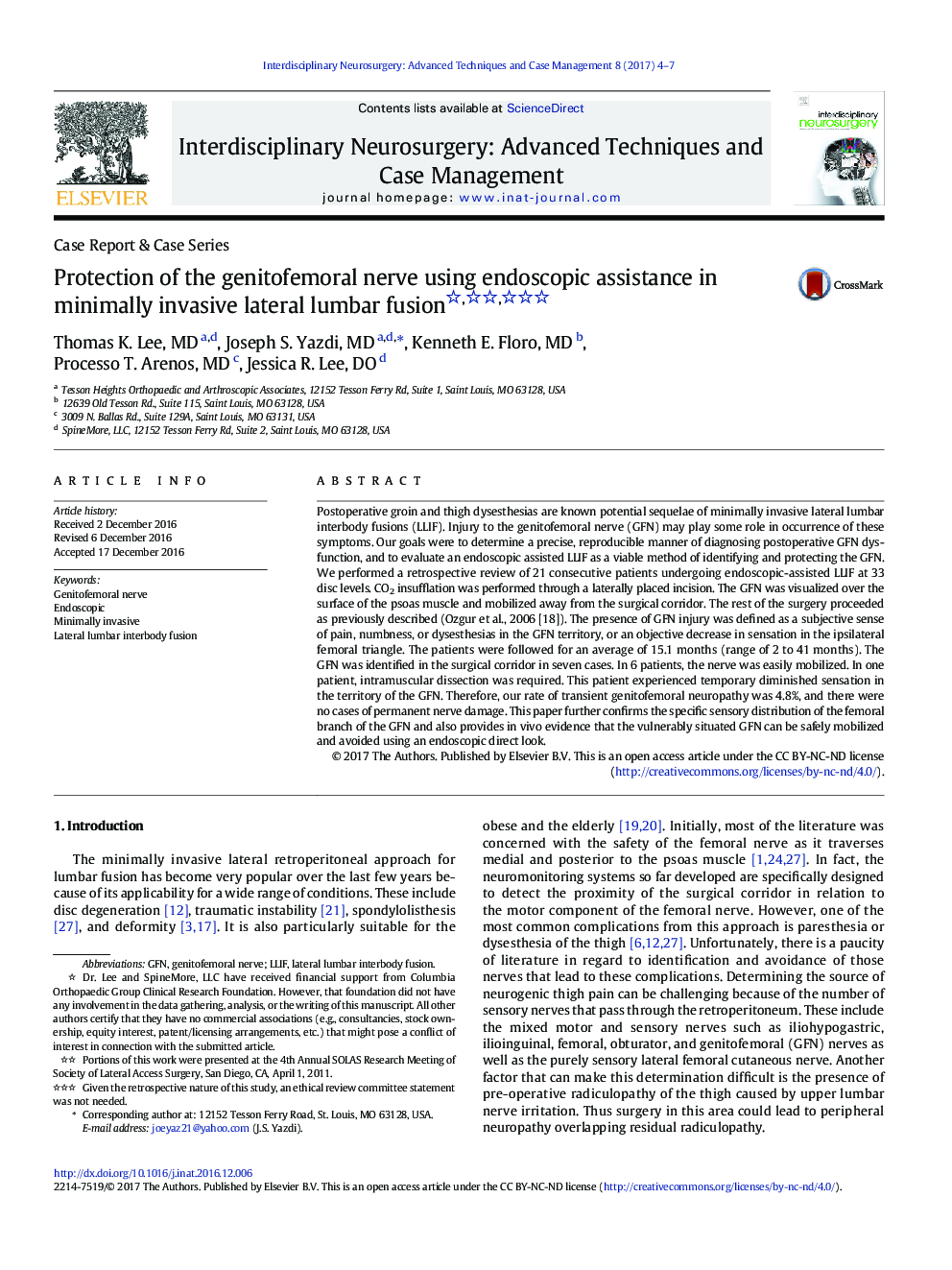| Article ID | Journal | Published Year | Pages | File Type |
|---|---|---|---|---|
| 5629453 | Interdisciplinary Neurosurgery | 2017 | 4 Pages |
â¢Confirm the sensory distribution of the femoral branch of GFN.â¢Identify the relationship of the GFN to the LLIF surgical corridor.â¢Endoscopically identify and protect the GFN during LLIF.â¢Quantify the risk of GFN injury using this new method.
Postoperative groin and thigh dysesthesias are known potential sequelae of minimally invasive lateral lumbar interbody fusions (LLIF). Injury to the genitofemoral nerve (GFN) may play some role in occurrence of these symptoms. Our goals were to determine a precise, reproducible manner of diagnosing postoperative GFN dysfunction, and to evaluate an endoscopic assisted LLIF as a viable method of identifying and protecting the GFN. We performed a retrospective review of 21 consecutive patients undergoing endoscopic-assisted LLIF at 33 disc levels. CO2 insufflation was performed through a laterally placed incision. The GFN was visualized over the surface of the psoas muscle and mobilized away from the surgical corridor. The rest of the surgery proceeded as previously described (Ozgur et al., 2006 [18]). The presence of GFN injury was defined as a subjective sense of pain, numbness, or dysesthesias in the GFN territory, or an objective decrease in sensation in the ipsilateral femoral triangle. The patients were followed for an average of 15.1Â months (range of 2 to 41Â months). The GFN was identified in the surgical corridor in seven cases. In 6 patients, the nerve was easily mobilized. In one patient, intramuscular dissection was required. This patient experienced temporary diminished sensation in the territory of the GFN. Therefore, our rate of transient genitofemoral neuropathy was 4.8%, and there were no cases of permanent nerve damage. This paper further confirms the specific sensory distribution of the femoral branch of the GFN and also provides in vivo evidence that the vulnerably situated GFN can be safely mobilized and avoided using an endoscopic direct look.
